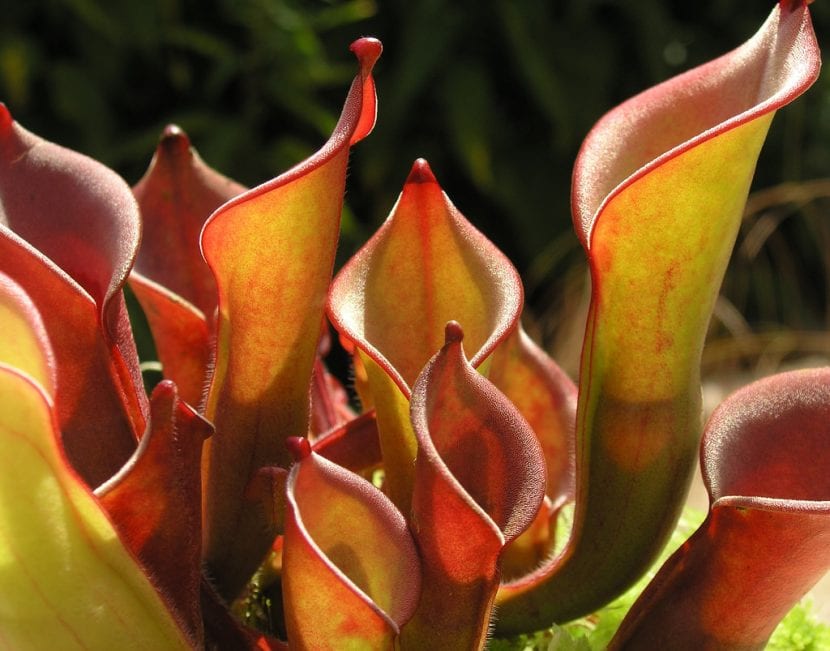
Image - Flickr / Miloslav Dobšík
Plants of the botanical genus Heliamphora they are one of the most delicate carnivores in the world. Its cultivation is not easy at all; In fact, if you are a beginner and also the weather is not quite suitable, you will have to be very aware of them.
However, its beauty cannot be ignored. The leaves transformed into tubes open at one end are precious traps. Surely that's why there are those who try to succeed with them over and over again. But, What care do they need?
Origin and characteristics
First of all, we are going to see what their origin is and what they are like so that we can identify them if we see them in a nursery. Well, the Heliamphora are endemic to Venezuela, where they live at altitudes between 900 and 3014 meters. Its name derives from the Latin "helos" which means swamp and from "amphoreus" which means amphora.
The genus contains 23 species, and all of them are perennial herbaceous plants that grow from an underground rhizome. Its height ranges from a few centimeters (Heliamphora minor) up to four meters (Heliamphora tatei). Its tube or jar-shaped leaves have a structure similar to that of a spoonful at the top and back that secretes nectar, which is what serves as a sleep for insects.
How do you take care of yourself?
If you want to get a copy, we recommend providing the following care:
- Location: outside, in semi-shade. This is especially important if you live in an area where the sun's rays are intense (the Mediterranean region, for example).
- Substratum: 100% moss, or mixed with equal parts perlite. It is advisable to put a first layer of clay inside the pot to improve drainage.
- Irrigation: avoid that the substrate remains dry. Use rain, distilled, or osmosis water.
- Flower pot: made of plastic with holes.
- Transplant: grows very slowly. It will be enough to transplant it every 2-3 years, and only if necessary; that is, if roots grow out of the drainage holes.
- Rusticity: its ideal temperature range is between 5 and 26ºC.
Did you know the Heliamphora?